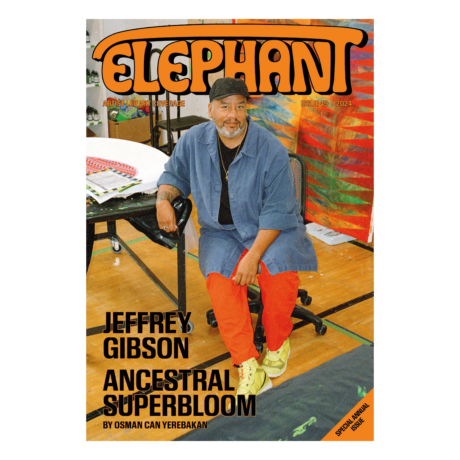Jeffrey Gibson, who represents the United States in the 60th Venice Biennale, welcomes Osman Can Yerebakan into his studio to explore the beaded intricacies of territorial heritage.
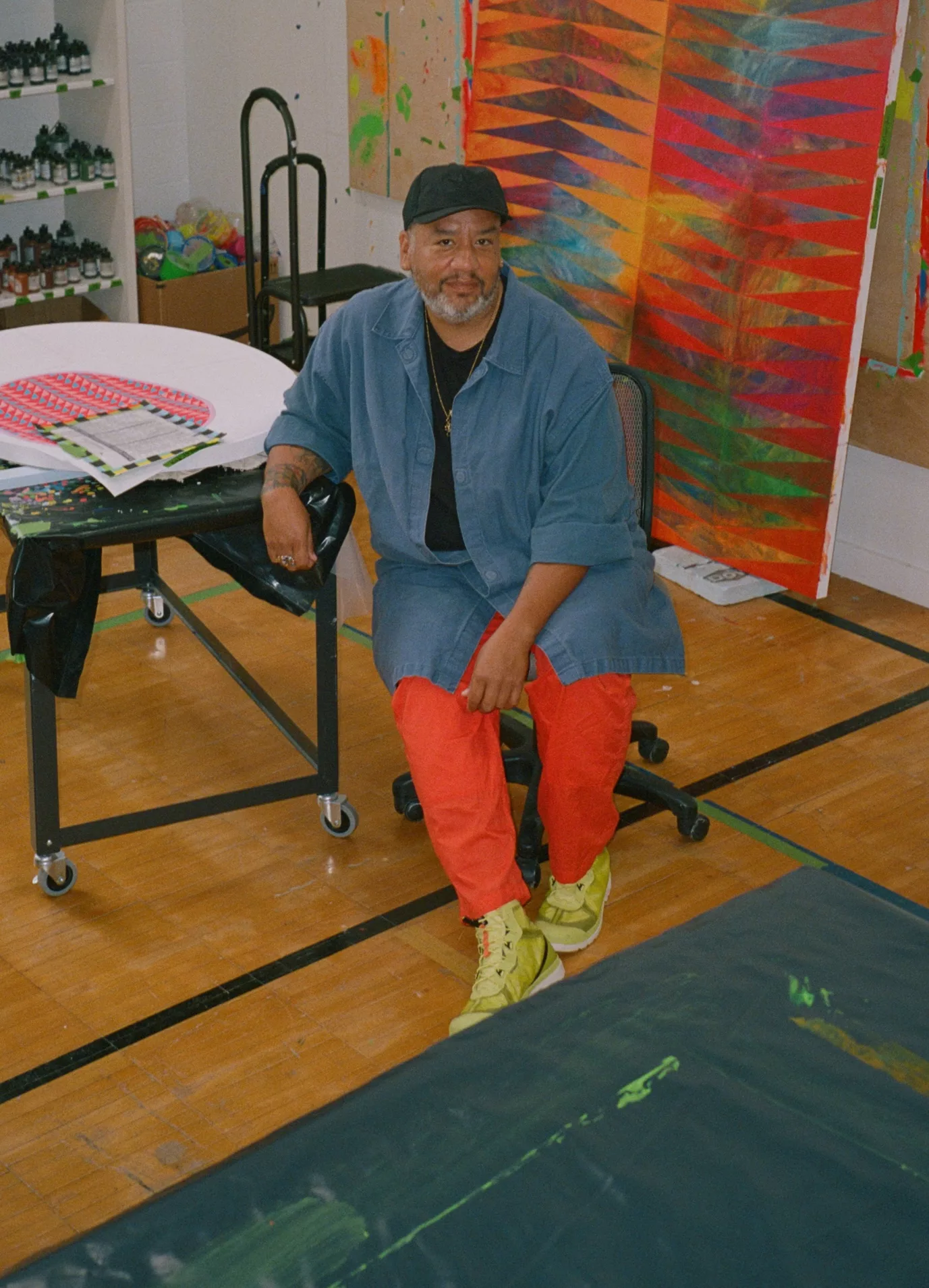
There are two repurposed punching bags in Jeffrey Gibson’s solo exhibition, Ancestral Superbloom, at New York’s Sikkema & Jenkins gallery—they are, however, far from being tired and beaten. Instead, the vertical bodies are rejuvenated and rejoiced with the artist’s typical treatment of surfaces: dressed in materials associated with craft, such as felt, beads and fringes, they thrive in their flamboyant second-coming. Against their original nature, the bags are fearless, shielded by their new skins, refusing victimisation. Titled If You Are Looking You Will Find it and Don’t Give Up (both 2023), they contain the unabashed pop optimism and flamboyant reverie that Gibson always injects into his intricately social practice of painting, textile, sculpture and performance.
Spreading a contagious reverie through their bead-encrusted surfaces, which often incorporate their anthem-like titles, the upstate New York-based artist’s works absorb viewers into a particular universe built with geometric colour potpourris and radiant proportions. An ode to the land—both as soil of chemical mysteries and as territorial heritage—connects his visually trippy language to histories that are written, uttered, lied about, or resurfaced, as well as to the present.
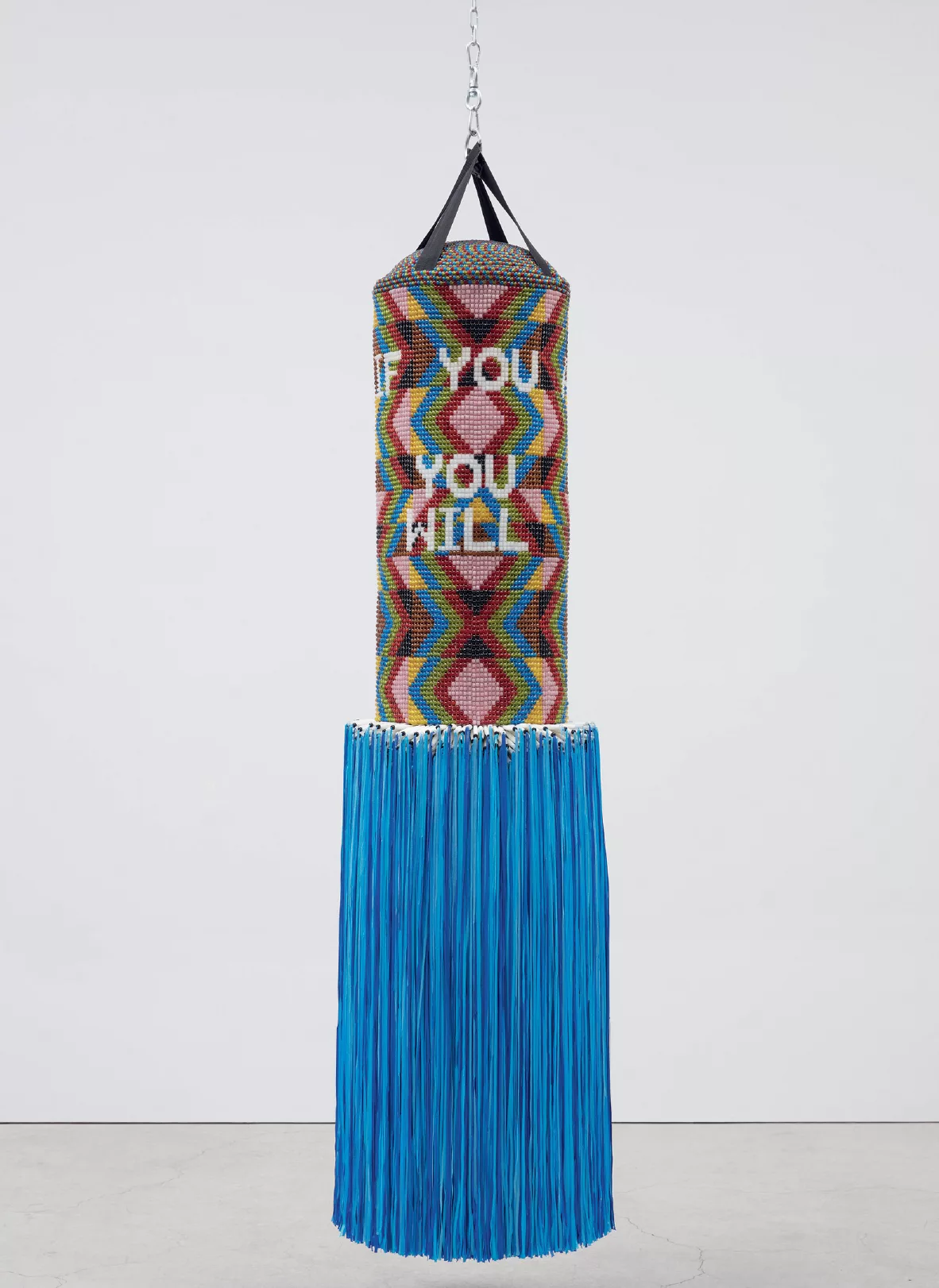
Gibson was born in Colorado as a member of the Mississippi Band of Choctaw Indians with Cherokee heritage, and he filters inherited art and craft methods from his lineage through his own experiences of contemporary queerness, driven by fluctuating politics, social media and natural decline. In I’m Open To Persuasion (2023), the flirty message is inscribed with a typeface close to illegible geometry, blending into the surrounding acrylic washes of colourful arrows; glass beads arranged in meditative harmonies frame a static radiance. Your Love Will Bring Me Home is even more emblematic, submerged into black and neon-hued kaleidoscopic shapes. Like a whispered courting invitation, the text evanesces a nocturnal rhythm.
While Gibson’s chunky motifs remain tightly solid, the stories they tell allude to malleability: myths, rituals, bonds, love and struggles seep into rigid patterns. Both anarchically collective and mischievously personal, the abstractions painted in oozy acrylic or sewn in sheeny beads evoke Indigenous reverie. From techniques of art-making to processes of healing, Gibson assumes native understandings of being. Take Me Where I Need To Be (2023) is an earthly yearning for a return to a free land and a desire for isolated intimacy. Bleeding into a vast topography of blossoming geometries, the titular text is available for the sharp eye that can listen to Gibson’s gestures.
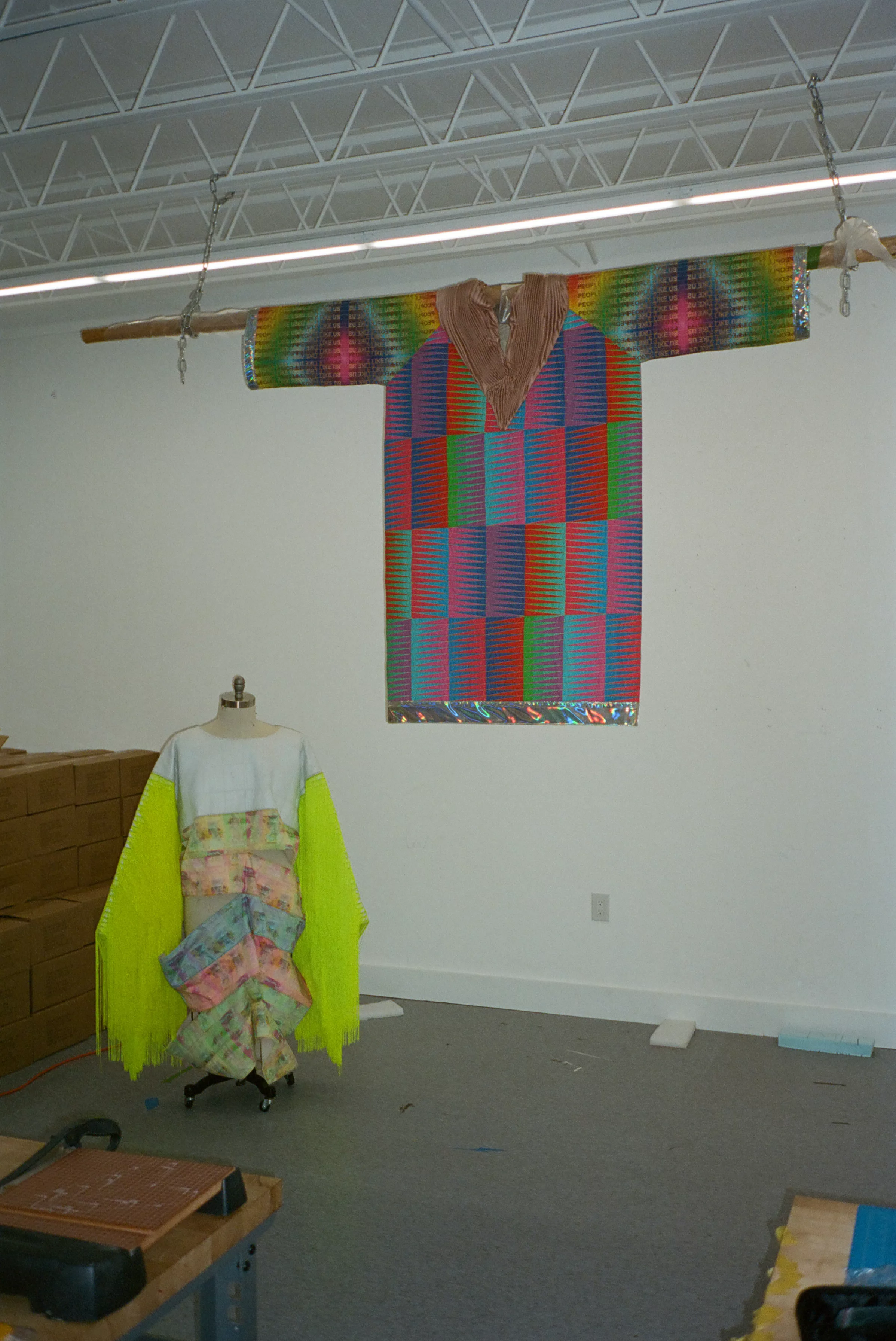
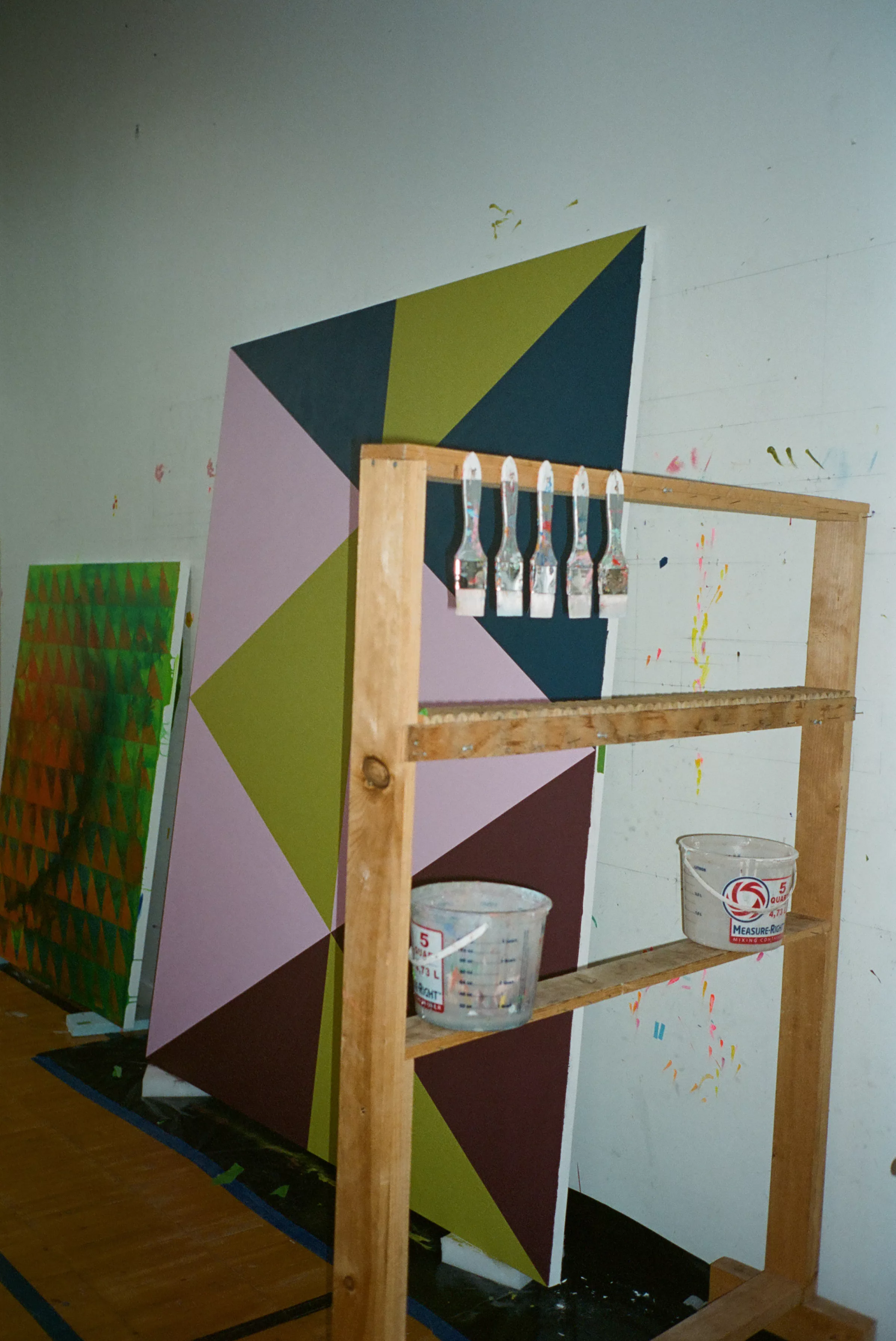
On the queer end, the paintings are both protest and disco. They operate as banners of resilience and garments of fierceness. This Fire Down in My Soul (2023) has a fiery composition, with lime green and yellow triangles poking at scorching reds and oranges. In between their touches reads the title’s slogan, its letters slimmed down to colour blocks and lines. Like a secret cruising hint or an enduring native tongue, the message penetrates the willing beholder.
Slogans, chantings, bangers and proverbs, words activate Gibson’s garden of ancestral superbloom. Sounds chime and colours flourish on the surface; soft fabrics cushion traumas and protect joys; the more abstract a lyric becomes, the louder its slogan echoes. “Don’t Give Up” is embroidered in a sanguine red over a black-and-white pattern across the punching bag. The overlap of the beaded message and the geometric compositions creates a hypnotic contrast, almost challenging the feasibility of the text’s uplifting message. A belief in resilience, however, is firmly sewn into Gibson’s undertaking, at times sparkling and persistently determined.
Written by Osman Can Yerebakan
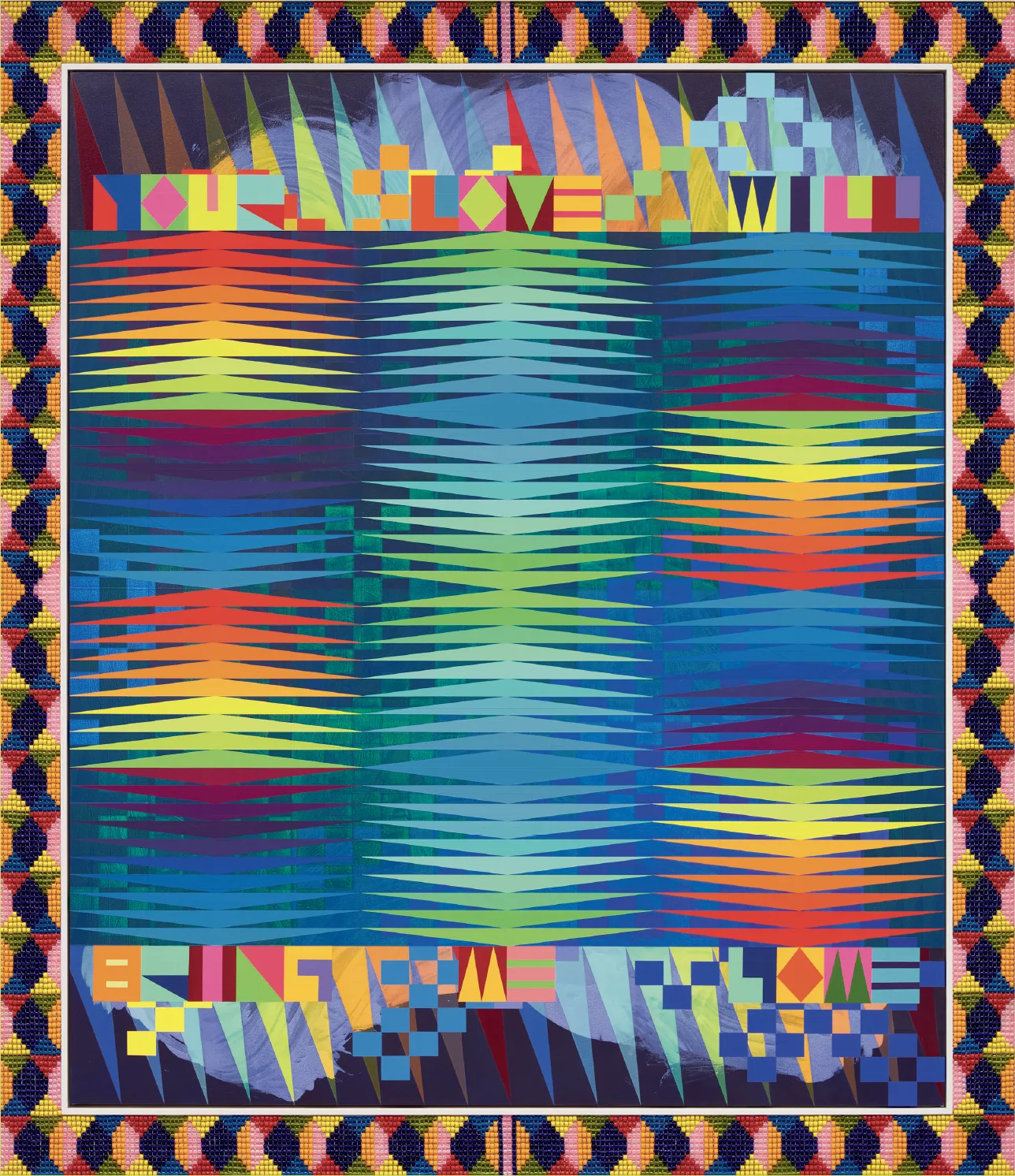
This feature originally appeared in Elephant #49
buy it here